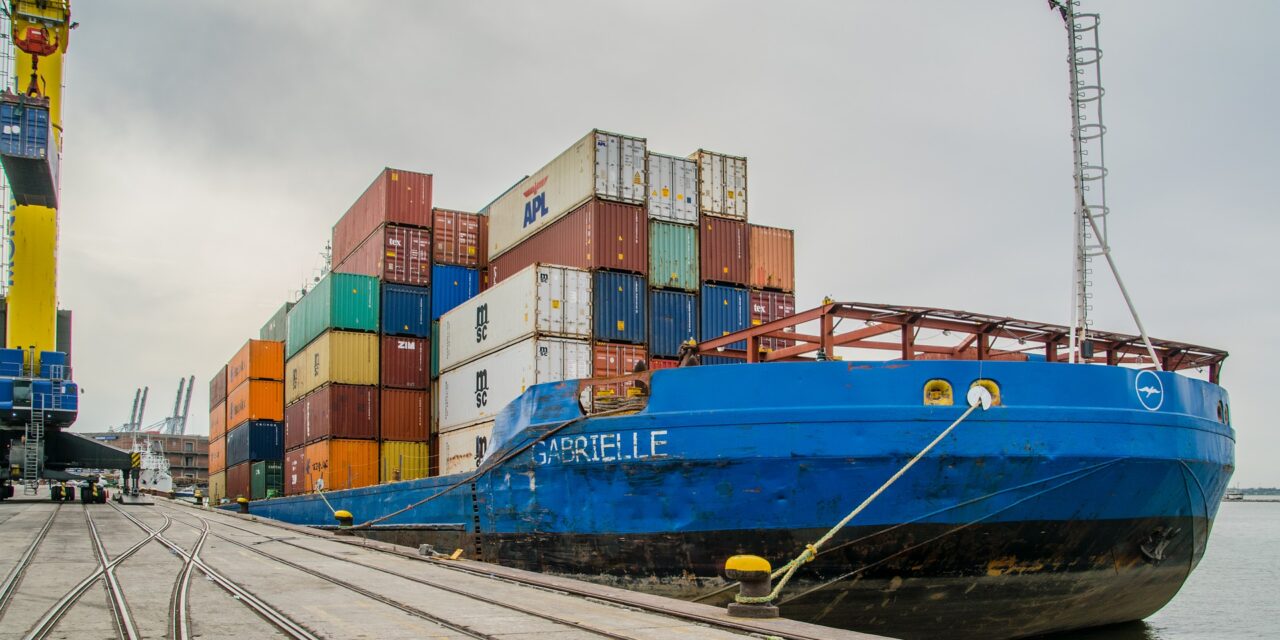By Ilinca Anghelescu, EW Nutrition
“Supply chain issues” is now a buzzword that has gone beyond the realm of business into our lives and households. We know holiday gifts might be delayed because of supply chain issues, mobile phones or electric cars are facing essential parts shortages never before imagined, and entire companies’ production and delivery are affected by supply chain issues. Why is this happening and what can be done?

Supply chains are nearly invisible – until something happens
The supply chain is an interdependent network of companies, individuals, databases, and actions whose ultimate goal is to ensure product or service delivery. The supply chain goes from the raw material to the end product or service that reaches the buyer. In most cases, this also includes the return of the goods or product servicing.
In the case of feed or food, for instance, a simplified version of the chain includes harvesting, storage, transportation, receiving and processing other raw materials, manufacturing, packaging, distribution, sale to the end customer, as well as potential returns at every stage along the way.
Supply chains are absolutely essential to the functioning of nearly everything in today’s society. If you eat tomatoes grown in your own garden, you are indeed outside the tomato supply chain; but your tools and fertilizer are probably not.
Supply chains are usually long, complex, highly interdependent, and often global because of cost pressure. No wonder, then, that one blow can bring down the whole domino chain. What is worse, the last year and a half brought not just one, but two concomitant blows.
Blow no. 1: Diminished capacity
The world is still reeling from the effects of COVID-19 – not just in terms of healthcare, but in terms of economic impact as well. In the immediate months after COVID-19 became a global concern, several things happened simultaneously to constrict the supply chain:
- many factories limited the number of workers allowed on premises
- ports (especially in China) shut down temporarily to halt the progress of the virus
- face-to-face businesses shut down as a reaction to COVID-19 regulations
These and other similar measures put pressure on the global supply chain. Employee layoffs or furloughs, together with output decreases, meant fewer people could operate within the supply chain, which then translated into diminished production and delivery capacity.
To cope with the immediate state of things and with the predicted economic downturn, lots of companies (among those who did not shut down altogether) decided to reduce their output in order to save costs.
Blow no. 2: Increased demand
Despite the decreased demand for restaurant or hotel deliveries, lockdowns around the world brought about one other change: demand for endpoint deliveries soared. This would normally spell great news for producers, if only the supply chain weren’t in the way.
Supply chains are built to be as efficient as possible: fast, agile, and as economical as can be. In other words, “lean”. That also means that massive disruptions – whether positive or negative – are not easily handled. When demand for home deliveries went up dramatically, that would have been a good opportunity to beef up the delivery chain. Unfortunately, that increase in demand coincided with a limited personnel and product availability (because of blow no. 1), as well as shipping issues around the world.
How so? From the beginning of the pandemic until now, ships have been queuing up in ports around the world. The first Corona aftershock relocated production around the world and created unexpected demand. Containers were filled with high-margin goods (such as facial masks or home electronics) for the richer countries, while low-margin goods for other areas had to wait for free space.

This short-term unexpected move created competition for the limited number of containers on the market. Prices soared and containers traded at five times the cost of the previous year. (The Ever Given crisis in mid-2021 did not help, of course.) At the same time, unloading the cargo at the destination point had to be managed with reduced personnel, as pandemic restrictions still applied and docking availability remained the same. Ships had to wait for days to unload their cargo, despite high demand for their empty containers.
Collateral victim: semiconductors
It turns out, not surprisingly, that we have all grown more addicted to technology during the pandemic. Increased demand in home electronics, coupled with issues in the production of silicone-based parts (mostly led by a drive to reduce power consumption in China), led to a worldwide chip shortage that is affecting companies across many industries. Most notably, Tesla, Apple or Qualcomm are struggling to deliver orders and are readjusting their launch and delivery plans. If your mobile phone is delivered weeks late, blame it on the supply chain.
How to handle the supply-chain crisis
In 2022, keep your expectations low. The issues will not be resolved in a couple of months, so you must prepare for a year of very slow progress.
Prepare for at least two more years of high costs. Delivery delays will hit some markets more dramatically. Chip manufacturers have already announced shortage expectations throughout 2023, with lead times growing from 9 to 20+ weeks. Many large players in tech have announced plans to build their own plants or replace chips (as Tesla did) with different technologies. Do not be overly optimistic, though: such plans take a long time – and ports are reeling from a new wave of COVID-19 infections and restrictions. At this point, it is not just the shipping costs that are running a little wild, with no incentive for the cargo players to lower them; it is also the ports themselves. In the port of Los Angeles, as in many around the world, it is not unusual for cargo to wait a month out at sea to be given access to docking and unloading.
Order early. This seems like a commonsensical step – and it is, at this point. As mentioned above – do not expect things to be resolved quickly and painlessly. Protein markets are hit just as much as tech components; ship and truck deliveries will take a very long time to recover across all sectors. Demand is increasing and supply is still low – and slow. Order early and strategize to cover the new cost structures.
Explore options around the world. With China and Western Europe getting hit by new variants and suboptimal vaccination levels, the rest of the world remains to be explored. Options in richer countries, that once seemed too expensive, now may have an edge. Look closer to home rather to what was formerly a more cost-effective source. With shipping costs 3x to 10x what they were two years ago, the incentive is gone. (Even so, air freight is prohibitively expensive, so land access may be the most realistic option where accessible.)
Expand your capacity. Not everyone can start building plants at the drop of a hat, like Apple; but many companies can consider adding production lines or partnering with allies (and even competitors) to build or exploit resources. Since the supply chain issues are expected to last a couple more years on the optimistic side, it’s a good idea to explore your options not just in geography, but in partnerships for capacity as well.
Prepare for worse times before the good ones. It’s always a good idea to be prepared, but even more so now. Some ports are already closing again in early December (for instance, Dalian, China, took early measures against an outbreak) and the world is reacting to another potential large-scale lockdown.
On top of that, recession seems inevitable in many industries, and the new Corona mutations have already pushed the stock market down a few notches. Inflation has increased – 6.2% in the US in October versus last year, and in the eurozone the 4.1% inflation is the highest in the past 13 years. Some industries fare well simply because the market need is there (food and feed among them), but remember that the supply chain has companies across industries fighting for the same cargo space.
The answer to the supply chain challenge is to practice caution, spread risk, and actively seek out opportunities – including partnerships, new business, and unexpected collaborations. But then, these are good business practices at all times.















